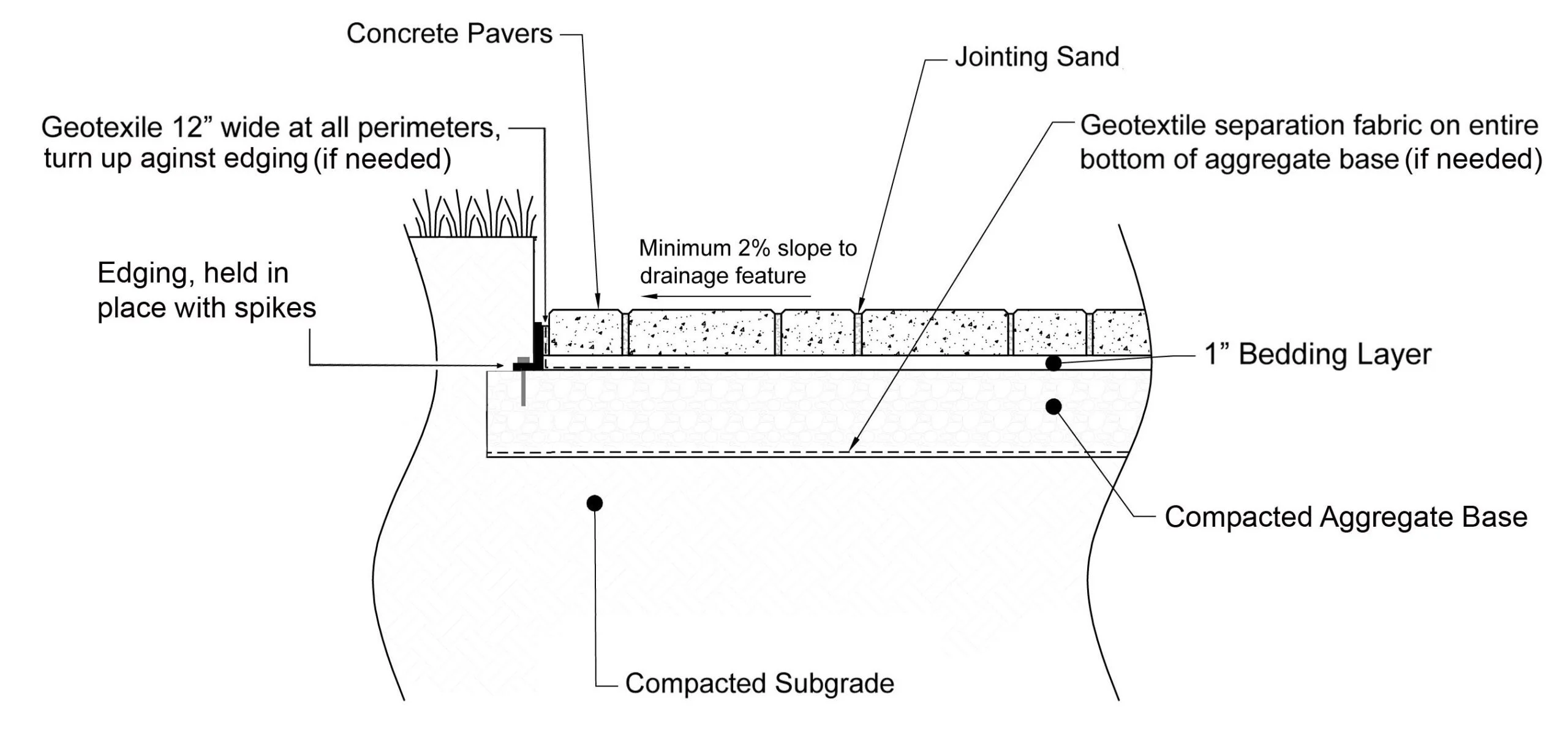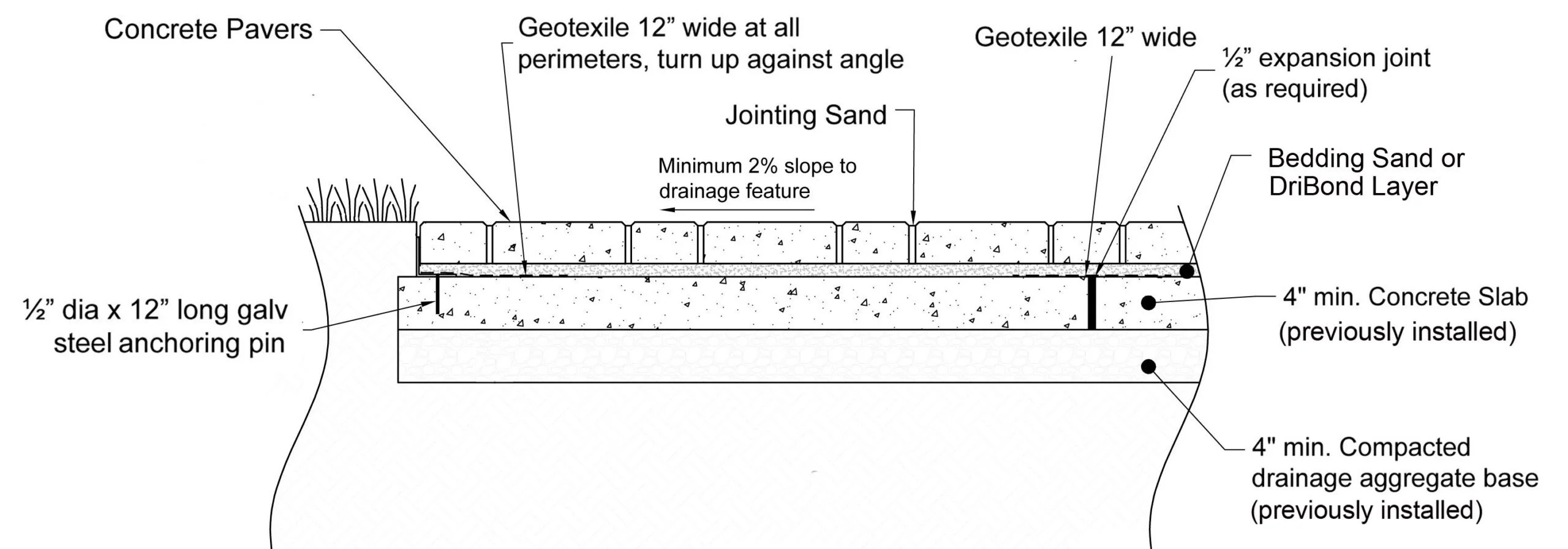Installing Concrete Pavers the ICPI Way
Installing Concrete Pavers the ICPI Way.
Step 1 – Excavation
Excavate 4-6” of topsoil off the area. It’s imperative to dig down to the clay or subsoil. If the subsoil in your project area has recently been filled (i.e. as a result of new construction), it’s a good idea to compact it with a large walk-behind compactor before adding the gravel around the paver base.
Otherwise, if it hasn’t recently been filled or disturbed, you can begin adding the aggregate base layer. When calculating the depth of the excavation, you will need to add the thickness of the paver itself, 1” of bedding sand, and the necessary gravel.
Step 2 – Aggregate Base Layer
Typically, the material used for this aggregate base consists of crushed gravel that will vary in size from 3/4” – dust.
~Walkways and patios: need to add 4-6”
~Driveways: need to add 8-12”.
If you have heavy clay subsoil, it’s a good idea to add a geotextile underlayment. This will prevent aggregate from mixing with the soil below. This is especially important in driveway applications. Once the base material has been placed, you will want to rake it off evenly. It’s critical at this phase that the gravel be pitched away from the house to allow for water runoff. Typically that slope will be between 1/8” and 1/4” of drop per linear foot (or more for driveways, depending on the location).
Step 3 – Compaction
For this, you will need a plate compactor with a minimum of 2,000 lbs. of force. Ideally you will want to compact in lifts (layers of gravel) no greater than 2”-3 at a time. Doing more than that will result in an improperly compacted paver base.
Step 4 – Bedding Layer
Next, you will add, and level 1” of bedding sand material to the paver base. You are now ready to lay the pavers.
Standard Concrete Paver Base Installation

Overlays – Installing Pavers Over Existing Concrete

Post written by Samantha Cabe – January 9, 2024